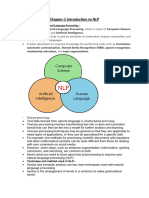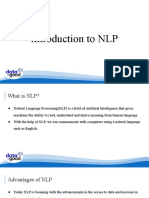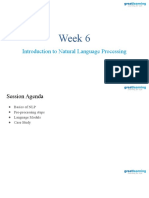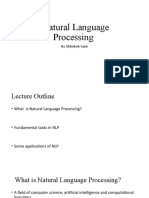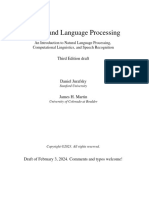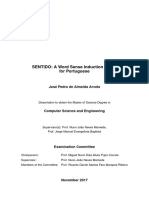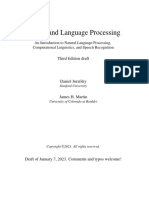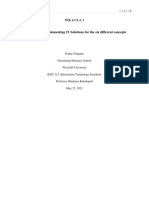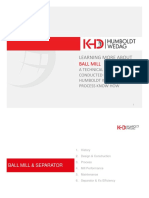0% found this document useful (0 votes)
25 views19 pagesNLP Part
Here are the key steps in calculating TF-IDF for terms in documents:
1. Calculate TF (Term Frequency) of each term in a document. TF is the number of occurrences of the term in the document divided by the total number of terms in the document.
2. Calculate DF (Document Frequency) of each term in the corpus. DF is the number of documents containing the term.
3. Calculate IDF (Inverse Document Frequency) of each term using the formula: IDF = log(N/DF) where N is the total number of documents.
4. Calculate TF-IDF by multiplying TF and IDF: TF-IDF = TF * IDF. This gives more weight to terms that occur frequently in a
Uploaded by
아이 커IkerCopyright
© © All Rights Reserved
We take content rights seriously. If you suspect this is your content, claim it here.
Available Formats
Download as PDF, TXT or read online on Scribd
0% found this document useful (0 votes)
25 views19 pagesNLP Part
Here are the key steps in calculating TF-IDF for terms in documents:
1. Calculate TF (Term Frequency) of each term in a document. TF is the number of occurrences of the term in the document divided by the total number of terms in the document.
2. Calculate DF (Document Frequency) of each term in the corpus. DF is the number of documents containing the term.
3. Calculate IDF (Inverse Document Frequency) of each term using the formula: IDF = log(N/DF) where N is the total number of documents.
4. Calculate TF-IDF by multiplying TF and IDF: TF-IDF = TF * IDF. This gives more weight to terms that occur frequently in a
Uploaded by
아이 커IkerCopyright
© © All Rights Reserved
We take content rights seriously. If you suspect this is your content, claim it here.
Available Formats
Download as PDF, TXT or read online on Scribd
/ 19












